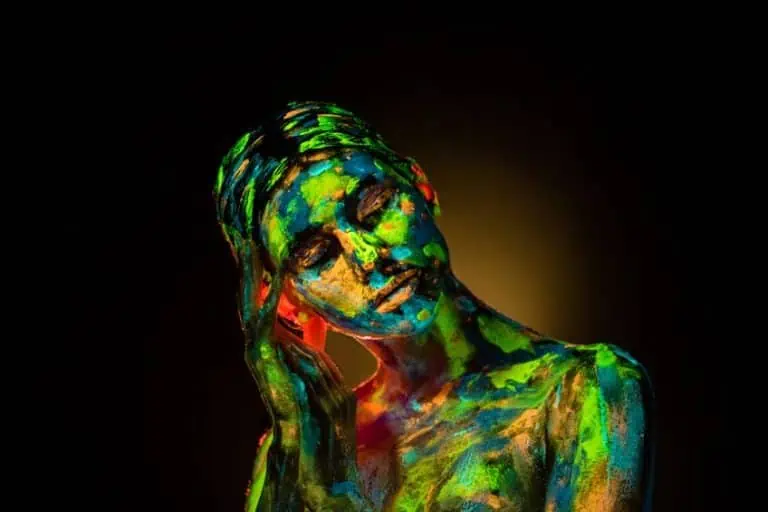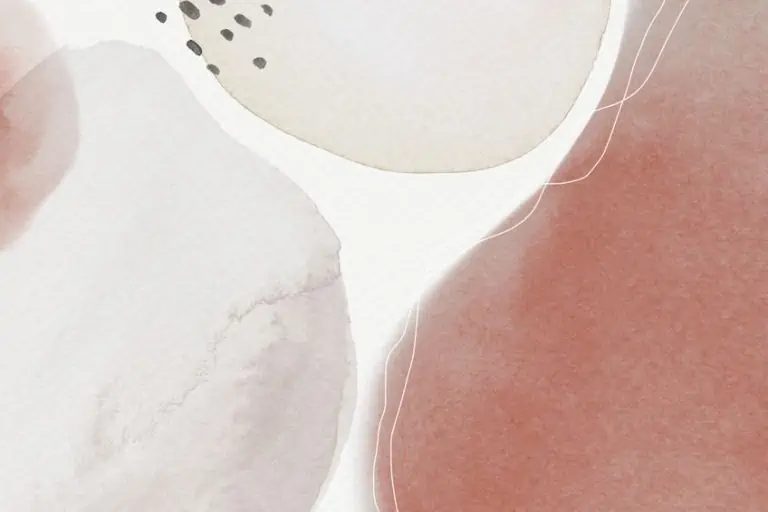Graffiti Styles – Exploring the World of Street Art
This post may contain affiliate links. We may earn a small commission from purchases made through them, at no additional cost to you.
Graffiti has become a fixture in practically every urban environment to the point where one cannot imagine a city without graffiti on its walls. However, there are a multitude of graffiti styles, and they are all worthy of some time and attention. Today, we will be giving them that attention by looking at some of their history, purposes, and the occasional famous figure who has made use of a particular style. Let’s get started and learn more about different graffiti styles!
Table of Contents
A Look at Graffiti Styles
There are many different graffiti styles around the world, and many of them share similar locations of origin. However, they are all distinct from one another and they vary in complexity and intent. So, we are going to have a look at ten of the most prominent graffiti styles. Let’s get to it.

Tag Style Graffiti
| Place of Origin | Philadelphia, United States |
| Era of Origin | 1960s |
| Common Characteristics | One-colored signatures |
| Prominent Artists | Cornbread and BLADE |
Graffiti tag styles are some of the most common graffiti styles that exist, and they are also some of the oldest. This particular type of graffiti makes use of a single color and is meant to mark one’s territory in a location as well as to serve as a signature of a particular artist. They are generally easy to create and can be completed within a matter of seconds. They were inspired by the gang and political slogans that were prominently found throughout urban environments at the time.
The various graffiti tag styles have their origin in the 1960s when they started to be thrown up around Philadelphia.
One of the earliest taggers was a young man known as Cornbread, who created tags to express a romantic interest in someone he knew as well as to create a level of prominence around his name. This would quickly spread, and the ease with which tags could be created has led to their proliferation around the world.
Graffiti tag styles can be found throughout the world today, and they have become some of the most common of all the different graffiti styles. The easy-to-apply style means that they can be quickly and easily created before getting out of an area, and the legality around graffiti artworks means that being able to create something and then quickly escape is a desirable one.

Handstyle Graffiti
| Place of Origin | Philadelphia , United States |
| Era of Origin | 1960s |
| Common Characteristics | Technical detail |
| Prominent Artists | CRYPTIK and SABE |
Handstyle graffiti is not so much a style on its own as it is rather a more artistic and technically skillful example of tagging. The idea is that regular tagging is a form of rather simple graffiti that generally entails the use of one color and a basic design. A handstyle, on the other hand, is a type of tag that is more artistic, creative, and idiosyncratic to the artist who has created it in the first place.
The style originated alongside tagging in Philadelphia in the 1960s, but it did soon spread to New York City and beyond.
There is no one handstyle and it is instead specific to each individual artist, but the increased complexity of these handstyles led to them being used throughout graffiti communities in an attempt to create more personalized graffiti writing styles that would serve as a means of showing off. Handstyle graffiti can be found throughout the world, and it is often used as a way of communicating with other graffiti artists. It can be a means of challenging others to see if they too can create something of equal complexity, a show of respect to certain others, or a way of attempting to attain fame within the community by showing the artist’s abilities. There are many stunning examples of this particular graffiti style.

Stencil Style Graffiti
| Place of Origin | South of France |
| Era of Origin | 1960s |
| Common Characteristics | Stenciled images |
| Prominent Artists | Ernest Pignon-Ernest and Blek le Rat |
While there are many graffiti styles that focus on spray painting a specific image, design, or word on a wall and then moving on before getting caught, stencil graffiti is quite different. The method involves making use of stencils, which are generally made out of cardboard or paper, and this allows an identical image to be replicated in many locations very quickly. This allows for far more complex forms of street art that can be produced very quickly.
The style has its origins as some of the earliest forms of modern graffiti styles, and some of the earliest instances of it were the works of Ernest Pignon-Ernest.
This graffiti artist made extensive use of stencil designs and some of his earliest were silhouetted designs of nuclear explosion victims that were painted throughout the south of France. This early example of the form can show the ways in which social commentary was generally at the forefront of these designs.
The stencil style is particularly useful for the abovementioned reasons of being able to quickly throw together an artwork by using a stencil and then applying either spray paint or roll-on paint. This allows graffiti artists to quickly produce artworks and then leave the area, and as the legality of graffiti is still an oft-debated topic, it is generally necessary for artists to get away as quickly as possible.

Simple Style Graffiti
| Place of Origin | New York City, United States |
| Era of Origin | 1970s |
| Common Characteristics | Bright colors and legibility |
| Prominent Artists | TAKI and CRASH |
This graffiti style is rather simple. The idea behind simple style graffiti is to make use of very basic and legible letters that are generally brightly colored. This is one of the many graffiti writing styles that can be found throughout the world, and the ease with which it can be created has led to its proliferation throughout the world.
However, the style has its origins in New York City in the 1970s when many graffiti alphabet styles were being created.
It is one of the earliest and most widely adopted graffiti styles, and this is mostly down to the ease at which it can be created. This has led to it being used by many young graffiti artists who are starting to make a name for themselves.

Bubble Style Graffiti
| Place of Origin | New York City, United States |
| Era of Origin | 1970s |
| Common Characteristics | Round-like shape |
| Prominent Artists | Lady Pink |
Bubble graffiti is likely one of the most prominent types of graffiti in the public consciousness as it has a relatively simple premise. It is made up of bubble-like designs and is often considered to be one of the many disparate graffiti alphabet styles as it is prominently used in lettering. The large and bubble-like letter designs also allow for these letters to be pressed into one another and often merge with each other.
This particular instance of graffiti-style letters originated in the 1970s in New York City.
It made use of easy-to-read letters that were generally bright and colorful, and some of the earliest users of this style were younger graffiti artists who were still quite inexperienced. The bubble graffiti style allows an artist to produce a larger and more legible artwork relatively quickly and so it has inherent desirability in that aspect of it. There are many instances of bubble graffiti around the world, and the highly exaggerated but otherwise mostly simple designs have become a common fixture amongst graffiti writing styles and they can be found throughout the world. The style is eye-catching and an international style by this point.

Streetart Style Graffiti
| Place of Origin | International |
| Era of Origin | 1970s |
| Common Characteristics | Figurative designs |
| Prominent Artists | Jean-Michel Basquiat and Keith Haring |
The streetart style is somewhat different to some of the other graffiti styles out there. In the case of this particular style, it typically makes use of figurative art pieces rather than being a graffiti writing style with creative use of font and lettering. This means that streetart graffiti makes use of characters, images, or any other kind of figurative elements. Streetart graffiti also tends to be focused on social commentary of some kind and is often employed for protest purposes.
The origins of this particular graffiti style date back to the 1970s and 1980s when it was employed by a number of artists around the world, but most prominently in places like the United States and France.
The style would become increasingly popular, and more contemporary figures like Banksy continued and iterated on the tradition to produce ever-more provocative streetart graffiti pieces. The style has likely become so prominent in recent years because it is generally employed as a form of societal critique of some kind. Many instances of this particular graffiti style are also often more detailed and focused than other kinds of graffiti, and they are often better recognized by those outside of graffiti circles as artworks.

Silver Style Graffiti
| Place of Origin | London, United Kingdom |
| Era of Origin | 1970s/1980s |
| Common Characteristics | Silver/chrome filling |
| Prominent Artists | ZAKI and ZONK |
Silver style graffiti is a form of simple style graffiti, and for this reason, it makes use of rather simple lettering and designs. The idea is that it makes use of silver and chrome colors as filling, and this allows it to be prominent against otherwise dark surfaces that may not be suitable for many other graffiti styles.
This particular style has its origins in the 1970s and 1980s when it became widely adopted throughout London.
The style was originally found along trains and walls, but soon moved out of the city and became a common style of graffiti in the New York City subway graffiti scene. It can now be found throughout the world.

Blockbuster Style Graffiti
| Place of Origin | New York City, United States |
| Era of Origin | 1970s/1980s |
| Common Characteristics | Large-scale designs |
| Prominent Artists | Banksy and Blu |
Blockbuster graffiti is a style that carries its size within its name. As the name may suggest, designs that make use of the blockbuster style are large-scale murals that can often be massive or even collaborative projects. For this reason, blockbuster murals have sometimes even been commissioned by governments and companies to cover walls in a stunning example of street art.
This style has its origins in New York City where it arose during the late-1970s and the early-1980s.
This particular style was created as a response to the increased difficulty in tagging New York City subway trains. It had become increasingly difficult to get around the tightened security in many of these locations, and so there started to be a desire to create large graffiti-style letters in places that were visible to the public. One of the strengths of the blockbuster graffiti style is that it is created in such a way that it attempts to convey a message of some kind. They are often used for the purpose of social commentary or marketing (when commissioned by companies), and this allows there to be a heightened sophistication in what is produced. However, thanks to their large size and public setting, they can be difficult to produce.

Wildstyle Graffiti
| Place of Origin | New York City, United States |
| Era of Origin | 1970s/1980s |
| Common Characteristics | Stylized lettering |
| Prominent Artists | SEEN and ZEPHYR |
Wildstyle graffiti is one of the most prominent examples of graffiti style letters that makes use of highly stylized letterings. This style is typically immensely complex and layered in its execution, and the letters often collapse into one another and interweave and/or overlap. This can affect the legibility of these letters, especially for those who are not in the know with regard to types of graffiti.
Regardless of their legibility, this is still one of the most recognizable graffiti writing styles and it has its origins in New York City in the late-1970s and early-1980s.
The idea behind its creation was in response to an increased level of competition amongst graffiti artists, and there was an attempt to produce graffiti styles and pieces that could better stand out. It was a desire for originality and technicality among graffiti artists that led to this style developing into what it could become.
Of all the different types of graffiti, wildstyle graffiti has become one of the best-known of them all. It drew its inspiration from an array of sources and used them to great effect. The style has since become prominent around the world and is especially used by more experienced graffiti artists who want to exhibit their talents, and wildstyle graffiti lettering is one of the best graffiti alphabet styles for ensuring that one’s art stands out from the crowd.

3D Style Graffiti
| Place of Origin | International |
| Era of Origin | 1980s |
| Common Characteristics | Perspective techniques |
| Prominent Artists | DAIM and SEEN |
3D graffiti is, basically, exactly what it sounds like, it is a form of graffiti that strives towards the creation of a three-dimensional form of street art. This means that it makes use of perspective tricks and techniques, such as shadows, vanishing points, and other effects to create the illusion of a 3D artwork. This form of graffiti can be found on practically any surface and, at its most technical, it can pass for three-dimensional objects.
This style has its origins in the 1980s when graffiti artists like DAIM and SEEN experimented with making use of these kinds of three-dimensional effects in their work in Germany and the United States respectively.
The style was soon found throughout the international graffiti scene. These artists, and others, quickly started to create large-scale examples of this graffiti style. The use of three-dimensional techniques such as this is seen as a particularly tricky example of graffiti artwork, and as a result, this particular style is often used as a means of showcasing the technical ability of the artist who is making use of this style. As 3D style graffiti can also often employ aspects, such as photorealism and anamorphosis, it can be a particularly complex style to master.

There are numerous graffiti styles out in the world, and many of them are rather simplistic, but a great number of them are also stunningly complex examples of street art. Graffiti, like many other forms of art, is extremely varied and found throughout the world. This article has examined where a handful of those styles came from and what they are. Hopefully, this means that you know a little more about graffiti styles now, and if you happen to be someone who is against graffiti, maybe it would be worth having a look at some of the stunning examples that have been created throughout the world.
Frequently Asked Questions
What Is Graffiti?
Graffiti is a term that refers to the marking of public or private spaces without the consent of those who own said location. The term is commonly used to refer to antisocial behaviors that lead to the spray painting of various public locations, but a thriving street art scene has arisen out of graffiti. While the term itself may be a catchall term to refer to any unauthorized marking of public spaces, the term has since become mostly associated with gang and youth culture in urban environments, especially the use of various graffiti tag styles that can be found throughout cities around the world.
How Many Types of Graffiti Styles Are There?
There are many different types of graffiti throughout the world, but some of the most prominent are the many graffiti tag styles that tend to be individualized to specific artists. Aside from this, other famous forms of graffiti writing styles include wildstyle graffiti, bubble graffiti, silver style graffiti, and many more. There are numerous graffiti alphabet styles, and there will likely be even more of these styles that develop in the years to come.
Where Did Modern Graffiti Originate?
Modern graffiti art, as opposed to the basic definition of graffiti itself, originated in the 1970s in New York City. While there are instances of graffiti lettering and other styles that predate this, graffiti culture kicked off during this period and in this city. Some of the most influential early graffiti artists were from New York City, and their designs and tags can still be found to this day throughout the city.
Who Is the Most Famous Graffiti Artist?
The most famous graffiti artist in the contemporary era is likely Banksy. This figure has remained famous despite being pseudonymous. There is a lot of speculation about his identity, but nothing has ever been confirmed. His works are generally focused on societal issues, with some of the most famous examples being the Girl with Balloon series that can be found throughout London.
Are There Instances of Ancient Graffiti?
While we may think of graffiti as a modern concept, there are many instances of ancient graffiti. While contemporary graffiti styles tend to be associated with spray paint, graffiti simply means that something is affixed to an already existing public space. For this reason, there are some instances of wall scratchings that can be found in ancient Egypt and Rome. One of the most notable instances of ancient graffiti is a Viking rune that was carved into the Hagia Sophia in Istanbul, Turkey.
In 2005, Charlene completed her wellness degrees in therapeutic aromatherapy and reflexology at the International School of Reflexology and Meridian Therapy. She worked for a company offering corporate wellness programs for several years before opening her own therapy practice. In 2015, she was asked by a digital marketer friend to join her company as a content creator, and it was here that she discovered her enthusiasm for writing. Since entering the world of content creation, she has gained a lot of experience over the years writing about various topics such as beauty, health, wellness, travel, crafting, and much more. Due to various circumstances, she had to give up her therapy practice and now works as a freelance writer. Since she is a very creative person and as a balance to writing likes to be active in various areas of art and crafts, the activity at acrylgiessen.com is perfect for her to contribute their knowledge and experience in various creative topics.
Learn more about Charlene Lewis and about us.







